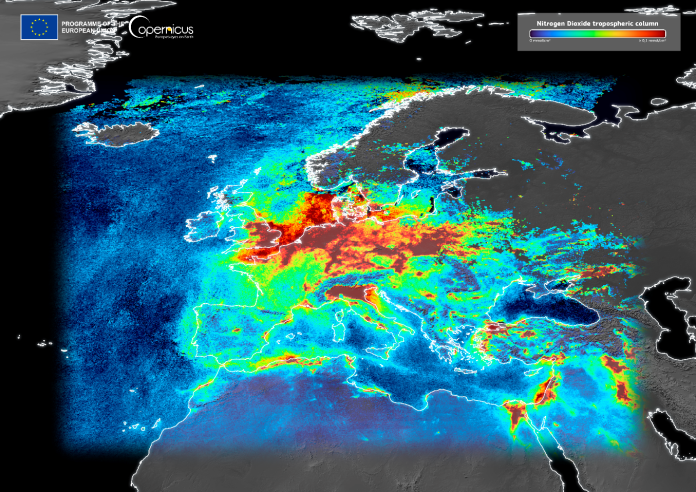At the start of this month, the European Union stepped up their environmental monitoring with the successful launch of the Copernicus Sentinel-4 mission from Cape Canaveral
The Sentinel-4, which is now in orbit, is the EU’s first geostationary satellite specifically designed to monitor air quality across Europe. This is a huge step forward for the Copernicus Earth Observation programme.
The Sentinel-4 satellite differs from previous Sentinel satellites in that it is not a standalone spacecraft. Instead, it is a hosted payload aboard EUMETSAT’s MTG-Sounder (MTG-S) satellite, sharing space with the Infrared Sounder (IRS) instrument. This setup allows the collection of atmospheric composition and meteorological data, significantly enhancing the EU’s capability to track and respond to air pollution events.
Technology for real-time monitoring
A big part of the Sentinel-4 is a cutting-edge Ultraviolet Visible Near-infrared (UVN) spectrometer. This can precisely measure a range of harmful pollutants, including ozone (O₃), nitrogen dioxide (NO₂), sulphur dioxide (SO₂), formaldehyde (HCHO), and aerosols. These substances are among the most significant contributors to air pollution and pose a serious health risk to millions of Europeans.
Once fully calibrated, Sentinel-4 will provide hourly updates on air quality during daylight hours. This high-frequency data stream fills a critical gap in current monitoring capabilities, allowing for near real-time tracking of pollution events. These updates will be integrated into the Copernicus Atmosphere Monitoring Service (CAMS), improving forecasts and supporting rapid response efforts.
Tackling a growing health crisis
Air pollution is one of Europe’s most significant environmental and public health challenges, contributing to an estimated 600,000 premature deaths annually. Urban regions, such as Northern Italy’s Po Valley and parts of Eastern Europe, frequently exceed safe pollution levels due to a combination of traffic emissions, industrial activity, and weather conditions that trap pollutants near the ground.
Sentinel-4 creates a new opportunity to monitor these pollution dynamics. It can detect rapid changes in air quality caused by rush-hour traffic, industrial emissions, and even transboundary events like Saharan dust storms and wildfire smoke. With its geostationary orbit, Sentinel-4 remains fixed over Europe, providing consistent and standardised measurements that complement ground-based monitoring stations and polar-orbiting satellites.
Supporting EU environmental goals
The data provided by Sentinel-4 will play a vital role in supporting EU policies, including the Ambient Air Quality Directive and the Zero Pollution Action Plan. These initiatives aim to reduce air pollution and its health impacts through better regulation and enforcement. Real-time satellite data will help identify pollution hotspots, support enforcement of air quality standards, and track progress toward long-term environmental targets set by the European Green Deal.
By enabling nowcasting — short-term forecasting based on current observations — Sentinel-4 strengthens Europe’s ability to issue timely public health alerts and enhance air quality forecasting. Vulnerable populations, including children and individuals with respiratory conditions, are likely to benefit from improved early warning systems.
The launch of Sentinel-4 marks a significant advancement in Europe’s capacity to monitor and mitigate air pollution. As the satellite begins delivering data, it will provide scientists, policymakers, and environmental agencies with powerful new tools to track and manage air quality. This mission not only strengthens the Copernicus programme but also reinforces Europe’s commitment to building a cleaner, healthier future.











